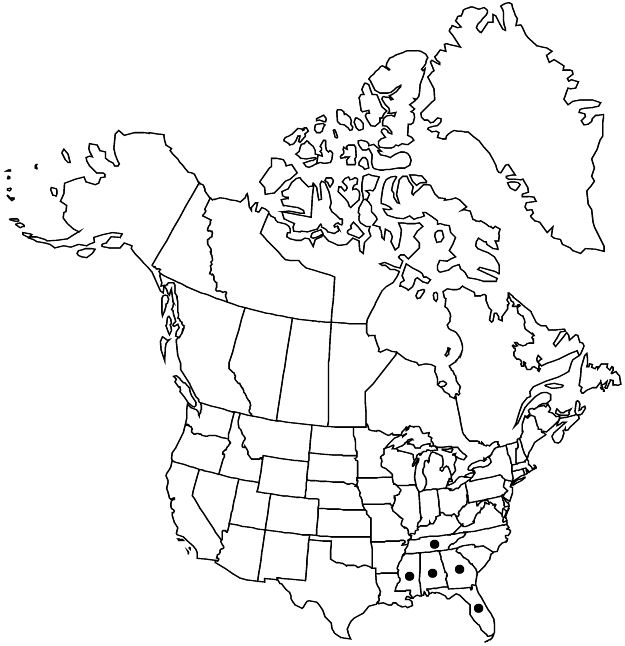Crataegus tecta
Biltmore Bot. Stud. 1: 26. 1901.
Shrubs or trees, 40–60 dm. Stems: trunk bark not recorded; twigs: new growth reddish green, 1-year old shiny, dark reddish black, older dull gray; thorns on twigs ± straight, 2-years old shiny reddish black, ± fine, 2.5–4 cm. Leaves: petiole length 30–50% blade, sparsely sessile-glandular; blade trullate to rhombic-ovate or ovate, sometimes broadly so, 3–6 cm, base broadly cuneate to cuneate, lobes 3 or 4 per side, sinuses usually ± deep, lobe apex acute or acuminate to ± cuspidate (larger ones sharper), angled or not, margins with small acuminate teeth except at base, veins 4 or 5 per side, apex subacute, adaxial midvein hairy young. Inflorescences 3–6-flowered; branches usually glabrous; bracteoles caducous, numerous, sometimes curved, sublinear (often broader near apex), membranous to subherbaceous, margins glandular. Flowers 17–19 mm diam.; sepals narrowly triangular, 7 mm, margins subentire or glandular-denticulate; anthers pale-pink to purple, sometimes ivory to cream; styles 3–5. Pomes red or green to yellow, suborbicular, 7 mm diam.; sepals reflexed; pyrenes 3–5.
Phenology: Flowering Apr; fruiting Sep–Oct.
Habitat: Woodland gaps and edges, brush
Elevation: 10–100 m
Distribution

Ala., Fla., Ga., Miss., Tenn.
Discussion
Crataegus tecta occurs from Mississippi to western Georgia and northern Florida. The species is fairly common in southern Alabama, and there is one somewhat atypical example for Tennessee, the second most northerly record for the series.
The typical form of Crataegus tecta is a distinctive morphotype in ser. Pulcherrimae. Compared to the somewhat similar C. incilis, the leaves are proportionately wider and have fewer lateral veins, and the anthers are cream or ivory. One specimen of C. tecta has a relatively densely pubescent inflorescence and, if correctly identified, this is the only such example for the series. Some specimens with conspicuously acuminate and slightly reflexed lobes are provisionally referred here rather than to C. venusta. Crataegus opima is usually the species most similar to C. tecta, lobe size and shape being the main discriminators. Crataegus austrina Beadle, with a narrower leaf form, is possibly the same.
Selected References
None.
Lower Taxa
"thin" is not a number."sessile-glandular" is not a number."adnate" is not a number."dm" is not declared as a valid unit of measurement for this property.